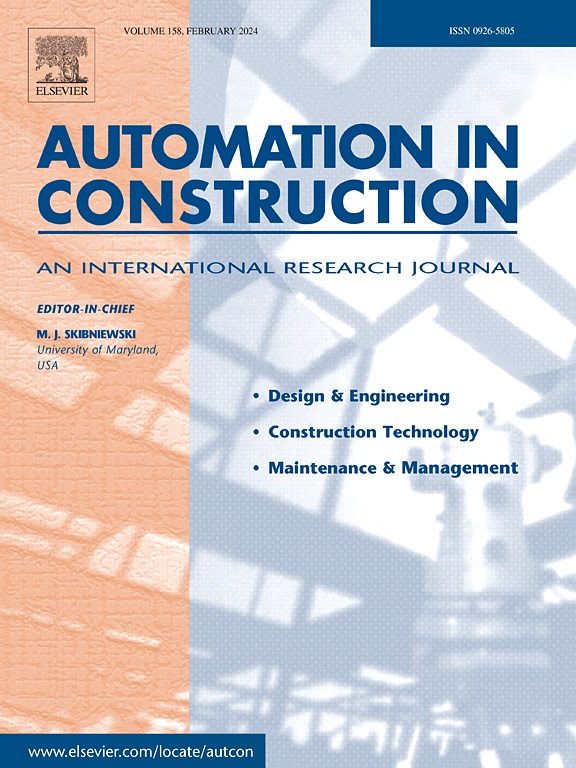建筑设计早期多目标可持续性优化的多lod生成方法
IF 11.5
1区 工程技术
Q1 CONSTRUCTION & BUILDING TECHNOLOGY
引用次数: 0
摘要
考虑到减少建筑对环境影响的紧迫性,本文侧重于从最早期的设计阶段优化可持续性,此时决策具有最大的影响。为了解决数字模型在草图阶段的粗粒度所带来的挑战和可持续性标准的经常冲突的性质,提出了一个生成工作流。该工作流程基于多层次细节(LOD)框架,能够在整个设计迭代过程中评估和跟踪多个可持续性标准。这种系统的方法集成了自动化功能空间规划,建筑解决方案的分层分割,以及双目标优化的帕累托最优替代方案的系统探索。该框架在草图阶段使用生命周期成本和全球变暖潜力,在八个真实的办公楼案例研究中进行验证。来自10位建筑专家的反馈证实了概念验证在支持回顾性和前瞻性决策方面的有效性,强调了其在建筑、工程和建筑领域推进可持续设计实践的潜力。本文章由计算机程序翻译,如有差异,请以英文原文为准。

Multi-LOD generative approach for multi-objective sustainability optimization from the early stages of building design
Given the urgency of reducing the buildings' environmental impact, this article focuses on optimizing sustainability from the earliest design phases, when decisions have the greatest influence. To address the challenges posed by the coarse granularity of digital models during the sketching phase and the often-conflicting nature of sustainability criteria, a generative workflow is proposed. This workflow, based on a multi-Level of Detail (LOD) framework, enables the evaluation and tracking of multiple sustainability criteria throughout the design iterations. This systemic methodology integrates automated functional spatial-planning, hierarchical segmentation of construction solutions, and systematic exploration of Pareto-optimal alternatives for bi-objective optimization. The framework is validated during the sketch phase using life-cycle cost and global warming potential, across eight real-world office-building case studies. Feedback from ten construction experts confirms the Proof-of-Concept's effectiveness in supporting both retrospective and prospective decision-making, underscoring its potential to advance sustainable design practices in the Architecture, Engineering, and Construction sector.
求助全文
通过发布文献求助,成功后即可免费获取论文全文。
去求助
来源期刊

Automation in Construction
工程技术-工程:土木
CiteScore
19.20
自引率
16.50%
发文量
563
审稿时长
8.5 months
期刊介绍:
Automation in Construction is an international journal that focuses on publishing original research papers related to the use of Information Technologies in various aspects of the construction industry. The journal covers topics such as design, engineering, construction technologies, and the maintenance and management of constructed facilities.
The scope of Automation in Construction is extensive and covers all stages of the construction life cycle. This includes initial planning and design, construction of the facility, operation and maintenance, as well as the eventual dismantling and recycling of buildings and engineering structures.
 求助内容:
求助内容: 应助结果提醒方式:
应助结果提醒方式:


